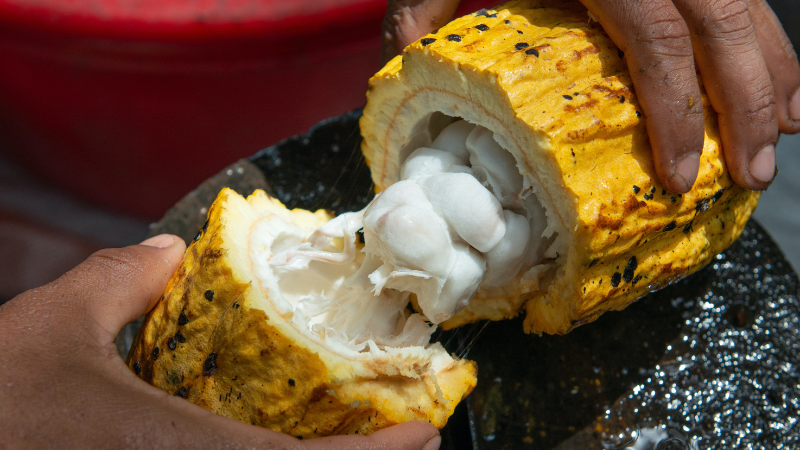by HAMADOU DAMALA from CNOP-CAF
Description
Central African Republic is one of the most vulnerable to climate change, characterized by increased temperatures, torrential rains, flood and drought.
Farmers have adopted agroforestry techniques at the landscape level through promoting good agricultural practices, the distribution of trees, or the deployment of certification. Agroecological intensification of cocoa production with the restoration of orchards based on agroforestry techniques helps increase production without deforestation or forest degradation. This practice is based on the co-construction of technical itineraries of the current practices of coffee farmers enriched with relevant experiences with associated species.
Agroforestry is used to protect remnant natural and fight deforestation and forest degradation, including restoring natural forests that have been degraded by cocoa production. A landscape-level approach places agroforestry in the broader context of environmental sustainability, resilience, climate change mitigation, and adaptation strategies. It also integrates various products besides cocoa, such as food, non-timber forest products, and timber. These agricultural techniques provide environmental benefits such as stable water supply, habitats for pollinators, improved soil quality, wildlife corridors, and control of pests and diseases such as the cocoa shoot virus.
Results
Cocoa agroforestry systems provide a wide range of ecological benefits: biodiversity conservation of flora and fauna, carbon sequestration, preservation and enhancement of soil moisture and fertility, contribution to pest control, microclimatic management such as rainfall stimulation, and many other benefits.
More than 100ha have been cultivated according to agro-ecological standards.
.
Climate smartness*
This story from the field tells us about the multiple interactions and benefits of agroforestry systems on CSA outcomes. It is worth highlighting the importance of agroforestry systems in the diversification of farm production systems, which not only facilitates the operation and maintenance of ecosystem services in a territory, but also stimulates the possibilities of generating farmer-owned business where the different outputs and inputs of the agricultural activities can be used and recirculated within the same system. This allows unveiling action points where new efforts can be focused to implement potential activities adding value throughout the different stages of the value chains. In this sense, to achieve effective adoption of CSA practices, it is fundamental to maintain and stimulate educational processes from and for the community, across different fields of knowledge and multidisciplinary perspectives. Particularly in adequate spaces that enable effective dialogue for sharing traditional and scientific knowledge, catalysing actions to materialize these opportunities. This kind of local alternatives also entail mitigation avenues as they contribute to minimize GHG emissions resulting from the intensive use of external/synthetic inputs for cocoa or livestock management, which in turn reduce carbon footprint per unit of product. At all events, agroforestry systems continue to be a potential practice to progressively modify and regulate micro-climate conditions in the agroecosystem. While in parallel it removes carbon from the atmosphere or fixing it both in the aerial biomass (notably in woody species) and belowground through the roots and the organic matter that is gradually accumulated in the soil, which will ultimately enrich its carbon stock.
*This is done in the framework of climate-smart agriculture (CSA) approach. Climate-smartness in agriculture means understanding impacts of climate change and variability along with the agricultural activity, which includes the planning of what crop to plant, when to plant, what variety to plant and what type of management practices are needed to reduce the impact on the environment (e.g. emissions reduction), maintain or increase productivity (e.g. yields) while increasing resilience and improving livelihoods.


